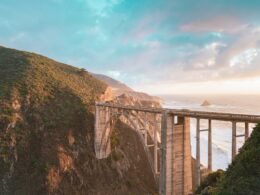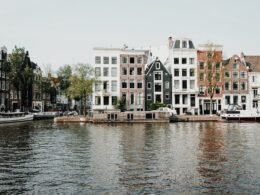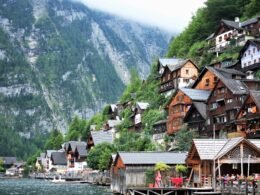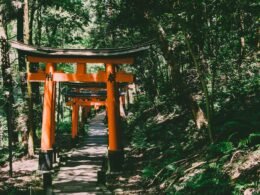Namibia is an exciting destination if you love history, nature, and 4×4 adventure. It is home to the world’s oldest desert – the Namib – and has 13 official languages, making it a cultural melting pot! If you’re ready to enjoy its diverse topography, explore age-old African rock art, and spot one of the free-roaming cheetahs, this 12-day Namibian itinerary is yours.
Table of Contents
- Day 1: Arrive in Windhoek and Explore (1 night)
- Day 2 and 3 : Windhoek – Lüderitz (Via Quiver Tree Forest) (2 nights)
- Day 4 and 5: Lüderitz to Sossusvvlei (2 nights)
- Day 6 and 7: Sossusvlei to Swakopmund (2 nights)
- Day 8 and 9: Swakopmund to Spitzkoppe
- Day 10 and 11: Spitzkoppe to Etosha National Park
- Day 12 : Etosha to Windhoek
- Things to Remember
- The Takeaway
Day 1: Arrive in Windhoek and Explore (1 night)

Fly into Hosea Kutako International Airport and arrive in the capital of Windhoek. The city is the largest in the country and home to over 460 000 inhabitants. Windhoek epitomises a fusion of cultural diversity, and there is so much for visitors to do. Before escaping the humdrum and heading for the open road and vast sandy wonders, check out some of these popular sites:
• Heroes Acre War Memorial
• Namibia Craft Centre
• National Museum of Namibia
You’ll also want to jump into the local food scene if you’re a foodie. These restaurants are worth a squiz!
• The Stellenbosch Wine Farm and Bistro
• Joe’s Beer House
Places to stay:
$: Chameleon Backpackers or Urban Camp
$$: Belveder Boutique Hotel or Hilton Windhoek
Day 2 and 3 : Windhoek – Lüderitz (Via Quiver Tree Forest) (2 nights)
Driving time: 7 hours and 32 minutes (with a stop, don’t worry!)
Distance: 684 KM
Day two is when the road trip truly starts, and I suggest starting bright and early. Put on some comfy clothes, load that playlist, and bring some so-called ‘patkos’ (road food) along, because it’s a bit of a drive. We are heading to the colonial coastal town of Lüderitz via the Quiver Tree Forest in Keetmanshoop.
Keetmanshoop (our first stop) is pretty interesting, amalgamating Gothic architecture with African stone. Here you’ll visit the Quiver Tree Forest, comprised of alienesque trees and dolomite rock formations.

It’s also a good time to grab a bite because what is a road trip without a snack (or ten!)? Stop at Kitchen 51 and devour some tasty delights like pulled lamb on ‘rosterkoek’ (barbeque bread/ grill cake) or a homemade pie. The coffee is also Brew-tiful and will give you that extra boost for the next leg of your drive!
Once you’ve refuelled the belly (and most likely the car), it’s time to head to Lüderitz in the late afternoon, where you’ll spend two nights. The coastal town is home to an abundance of wildlife – including flamingos and penguins – and houses colonial architecture plus some impressive Art Nouveau buildings.

Things to do:
• Explore the ‘ghost town’ of Kolmanskop that was abandoned in the 1950s. This once bustling diamond mining town has since been taken over by the desert.
• Visit Diaz point and check out the red and white lighthouse that was built in 1915.
• Relax on Agate beach, take a picnic, and enjoy a drink while you catch the sunset.
Places to stay:
$: Element Riders Backpackers
$$: Cormorant House or Alte Villa
Day 4 and 5: Lüderitz to Sossusvvlei (2 nights)
Travel time: 6 hours and 29 minutes.
Distance: 497.7 KM
Next up, we are off to Sossusvlei. This salt and clay pan is situated in the Namib-Naukluft National Park and is home to the world’s most photographed dune – Dune 45. This really is a bucket list must for anyone who loves geography since the colours of the desert and diverse topography will blow your mind. It also happens to be a UNESCO World Heritage Site. You’ll spend two nights here.
Things to do:
• Climb Dune 45 (relatively easy and takes around an hour). Catch the sunrise/ sunset from way up high.
• Wonder around Deadvlei and walk through the iconic 900-year-old trees in the white clay pan landscape. This is the stuff that guidebooks are made of!
• Refresh at the Sesriem Canyon. If you visit after heavy rains, you can cool down and have a dip.
• Gaze at the stars. Since there is hardly any light pollution, you are in a prime spot for stargazing.
• Keep your eyes peeled, and you might spot an Oryx from the antelope family. Fun fact: These interesting creatures can cool the blood that goes to their brain with their nasal capillaries while they breathe.
• If you are feeling extra fit, climb Big Daddy dune!

On your second day in Sossusvlei:
Wake up early, grab a take-a-way coffee, and catch the sunrise from atop the dunes if you’re feeling sprightly. (Also, this is a serious envy-worthy selfie spot.) If you’re feeling extra and aren’t afraid of heights, you can also catch a Namib Sky Hot Air Balloon ride and enjoy some bubbles as you soar over the savanna.
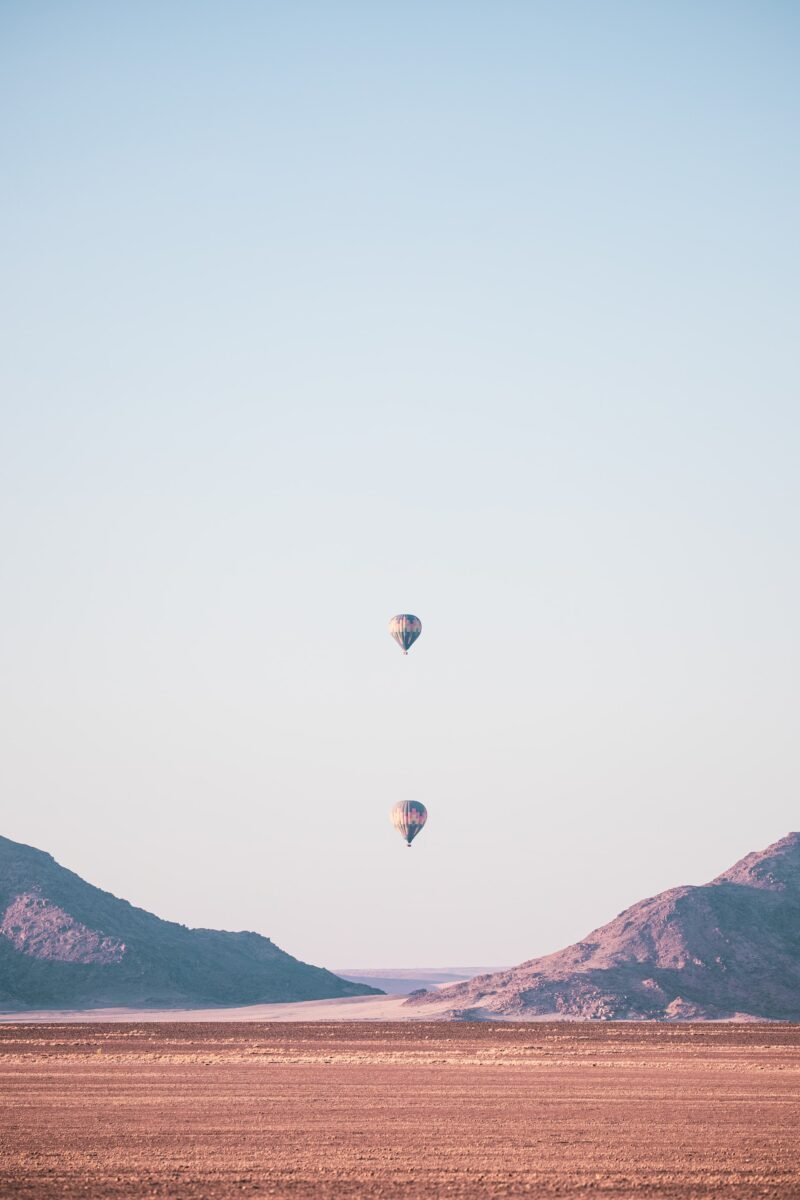
NB: Pack loads of water if you plan on climbing the dunes!
Places to stay
$: A Little Sossus Lodge
$$: Sesriem Camp Site (Chalets and campsites available) and Agama Lodge
$$$: Le Mirage Resort (48 KM away)
Day 6 and 7: Sossusvlei to Swakopmund (2 nights)
Travel Time: 5 hours
Distance: 403 kilometres

Now it is time to head to the coastal town of Swakopmund for two nights. The town was founded by the Germans in 1892 and was the main harbour at the time. The rest of day six and all of day seven can be spent exploring colonial-era architecture, meandering along the old sea wall, and visiting these must-see attractions:
• Explore Sandwich Harbour or take a scenic tour: Sandwich Harbour is a truly a picturesque location with its reed-lined lagoon, freshwater springs, and sandy dunes. It’s also abundant with bird life, and here you can find flamingos, pelicans, and dabchicks. You might even spot a dolphin or two in the bay or a jackal casually scurrying along the sandy shores.
• Cultural/Historical township tour: If you’re interested in the local culture and history, book a walking tour and learn more about the area on foot.
• Go quad-biking: Adrenaline junkies listen up, quad-biking is a must! There are loads of tours around, and you’ll be able to traverse Dune 7. Go at sunset for a particularly fantastical experience.
• Take in the architecture: If you love history and architecture, a stroll around Swakopmund will prove most interesting. Check out the old railway station, the Swakopmund Lighthouse, the Hohenzollern Building, and the State House.
• Visit Walvis Bay and see the flamingo colony: Located 30 KM outside of the town, Walvis Bay is home to a huge flamingo colony. This bustling port town is filled with fishing boats and houses the Pelican Point Lighthouse.

• Go seal kayaking: If you’re in Walvis Bay, book a kayaking trip and spot some seals.
• Swakopmund Museum: Learn about local history, tribes, minerals, plants, and animals.
Restaurants to try:
• Swakopmund Brauhaus
• The Tug Restaurant
• Jetty 1905 Restaurant
Places to stay:
$: Hansa Hotel
$$: Strand Hotel

Day 8 and 9: Swakopmund to Spitzkoppe
Travel time: 2 hours and 5 minutes
Distance: 161 KM
Start out early and head to Spitzkoppe via the small fishing town of Henties Bay. Stop for a coffee or breakfast here and check out the Zeila shipwreck if you love maritime history. You can also visit Cape Cross with its 200 000 strong seal colony (during breeding season). Then it’s time to hit the road because there is loads to see in Spitzkoppe where you’ll spend two nights.
Side note: Film buffs may know that part of the film Space Odyssey was filmed here in 2001!

Spitzkoppe is located in the mountainous region of Damaraland, and here you’ll find a plethora of geographical wonders and local delights, including the famous arch, granite peaks, Bushman rock art, and locals selling crystals like topaz and aquamarine. Top attractions include:
- Hike/climb the Spitzkoppe Mountain: If you’re a strong hiker or climber, then you’ll love traversing this red granite mountain. I’d advise going with a guide or taking one of the gentler hiking routes.
- A scenic desert bike tour: If you love cycling, explore some of the epic cycle tours around. What better way to take in the beauty of it all than cycling through the dunes?
- Spot a plethora of flora and fauna: This region is home to a myriad of animals and plants, including the desert lion, Namaqua rock mouse, zebra, and more.
- Stargazing: This is another incredible stargazing spot. Snap some epic shots of the Milky Way as you forget the hustle and bustle of the city.
- Unleash your inner photographer: This is a photographer’s paradise. Golden hour offers the perfect opportunity to get some incredible photos of the landscape – and yourself featuring said landscape, of course!
- Visit the Spitzkoppe Arch. This natural rock formation is a must!

Where to stay:
$: Spitzkopf Tented Camp Site
$$: Spitzkoppen Lodge
Day 10 and 11: Spitzkoppe to Etosha National Park

Travel time: 4 hours and 17 minutes
Distance: 417 KM
We’re heading to the last leg of our trip now – two nights in the incredible Etosha National Park before we get back to Windhoek (and then, reality! Boo!)
Leave Spitzkoppe early so that you can make the most of your time at the park. If you want to totally relax, it might be best to book a guided safari tour since the guides will know the best locations to spot animals and cover a larger area of the park. These two watering holes are definitely worth visiting:
Okaukuejo and Moringa watering holes: At night-time, the watering spots offer a fantastic opportunity to see numerous animals, including elephants, rhinos, giraffes, and perhaps even the elusive cheetah. If you stay at one of the chalets within the park, you might even spot a so-called ‘ghost elephant.’ They’re named ghost elephants because of the white clay and calcite sand in the park. When they cover themselves in this, their skin turns white, and a ghostly apparition with a trunk emerges.

Spend the second day driving through the park and enjoying the vast array of wildlife. Etosha truly does boast an abundance!
Where to stay:
$: Etosha Safari Camp (around 75 KM from the national park)
$$: Dolomite camp and Okaukuejo camp (these are both state-owned and located within the park.) While they aren’t the most luxurious camps, you’ll get to see nature in all its glory and have a better opportunity of seeing elusive creatures at night. They also both have restaurants, which is handy after a long-day of safari driving. Watch out for jackals, though; they love to steal snacks!
$$$: Little Ongava Lodge (A super luxury lodge just 5 minutes from the park gates. Be prepared to spend the big bucks though!)

Day 12 : Etosha to Windhoek
Travel time: 4 hours and 3 minutes
Distance: 414 KM
It’s time to head back to Windhoek, where it all began. You can catch a late afternoon flight home, or enjoy a last evening in the capital.
Your 12-day, whirlwind Namibia trip has come to an end. You’re most likely sun kissed and perhaps a little exhausted. You’ve made memories to last a lifetime and you’ve certainly gotten in those kilometres!
Things to Remember

While you can use public transport between the main centres, you’ll have to rent a car or join a tour to get to some of the natural wonders further afield. Many rental companies have drivers if you want to plot your journey but aren’t ready to navigate the long drives yourself. Whatever you decide, these sites are a must. All you need to do is plan the perfect road trip playlist and ensure you have enough ‘padkos.’
Top tip: If driving yourself, keep an eye on the fuel tank regularly. You’ll drive long distances between towns and attractions and might not see a fuel stop for hours. On this note, rent a fuel-efficient car that gives you more kilometres per litre. 4×4 vehicles are best to navigate potholes and, of course, the dunes!
The Takeaway
This gorgeous country on the south-western coast of Africa will delight anyone with a penchant for the Great Outdoors. Its rich history, interesting architecture, and geographical wonders make it the ideal road trip destination. If you’re excited about a Namibian adventure, why not take a peek at our other Southern African escapades?









